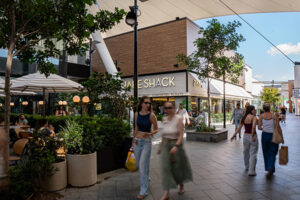As 2019 gave way to 2020, and the world realized that a global pandemic would be upon us, nobody believed that such an event might actually have lasting effects on economies or societies at large. Our belief, as serious as COVID-19 was slated to be, was that the effect would be temporary and that “normality” would eventually return.
Twenty-four months on, we have learned new phrases: “post-pandemic”, “social distancing”, and the “new normal” are firmly planted in our vocabularies, and within retail spaces, two things have become quite clear. Firstly, a permanent shift in consumer behavior has taken place, and secondly, a return to pre-pandemic retail is unlikely.
Consumers Have Gotten Used to the Changes
COVID-19 brought about a rapid and wide-ranging set of conditions that, without a doubt, induced behavioral change. Uncertainty and fear enforced “touchless” retailing. Lockdowns introduced an imperative to isolate, universally double down on essentials, and forego experiences and physical interactions with destinations, brands, services, and people. A shutdown of global supply chains, and shortages of products and essential components, forced a re-think in our consumption patterns, and we experienced furloughs as well as pressure on disposable income.
Self-service models in food and beverage became the norm. Shopping online, already a threat to many physical retailers, grew to be pervasive across most categories. Remote delivery services were essential – and not for just those items deemed “nice to have”. “Cashless” payment became more than a pipe dream in many economies.
“For most, retailing is not a chore – it is a release and a form of entertainment.”
Siôn Roberts, Coniq
As we come out of the pandemic, one might imagine a return to what was once regarded as normal, but two years is a long enough period of time for consumers to get used to changes – and for retailers to adapt to the new opportunities brought on by COVID-19. Indeed, according to the EY US Future Consumer Index, 54% of people agree that the new behaviors adopted during the pandemic now feel normal, and 49% believe that their lives will remain significantly changed.
In two years, we have adapted to not only accept but to expect such things. Survival services such as those outlined are still around, but they have since morphed into convenience services, and they do not look like they are in danger of being withdrawn any time soon. What DID, of course, disappear is much of the fun and EXPERIENCE of shopping. For most, retailing is not a chore – it is a release, a form of entertainment, and often a destination, and as we unmask, such things are returning. As the pendulum swung two years ago from interactivity to isolation and from physical to digital, so now, the pendulum will re-center. We want the best of both worlds, and omnichannel has taken on a new meaning. True integration, understanding, and servicing of our online and offline personas will become the keys to post-pandemic success.
Technology is a Critical Factor
The last two years have shown us that nobody can predict the future, but it has also taught us that retailers who adapt most quickly to changing customer habits do the best. We discovered that understanding detailed customer behavior and responding with specific value and service were no longer “extras” with respect to the retail business model – they were essential to survival. Technology is a critical factor: Using customer data as a guide and developing means of new customer engagement are key to meeting and exceeding needs and expectations.
The volume and variety of data available to retailers is greater than ever before. With the right tools and structures in place, shopping malls and stores can leverage such data to deliver new forms of customer engagement. Adopting an omnichannel approach to customer engagement, for example, is a strategy that is indispensable for retailers. The pandemic opened up convenient alternatives for customers (for example, buy online, pick-up in store, free delivery, and in-store shopping incentives) that they still expect today.
Identifying what matters most to your customers in light of behavioral changes will result in them feeling valued, while giving you, the retailer, the opportunity to weather the current climate and boost sales, visits, and lifetime value. Consumer behavior may be hard to predict, but one thing we can definitely assume is that the world will remain unpredictable, which means responsive and agile retailers that listen will claim success.
About the author:
Siôn Roberts is EVP of Global Sales and Marketing at Coniq






